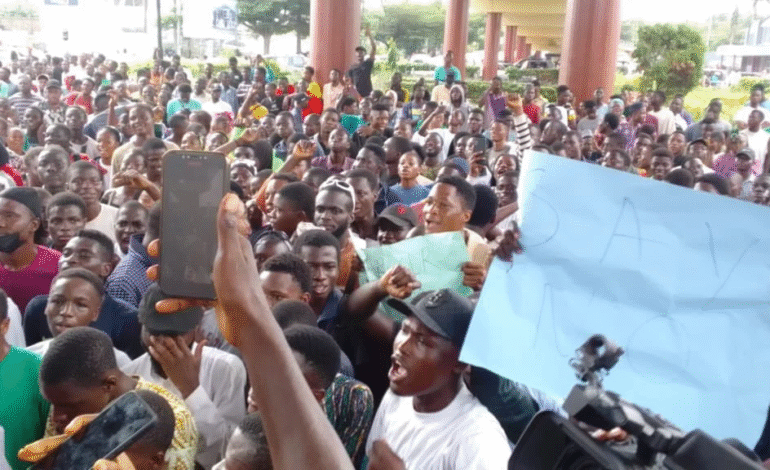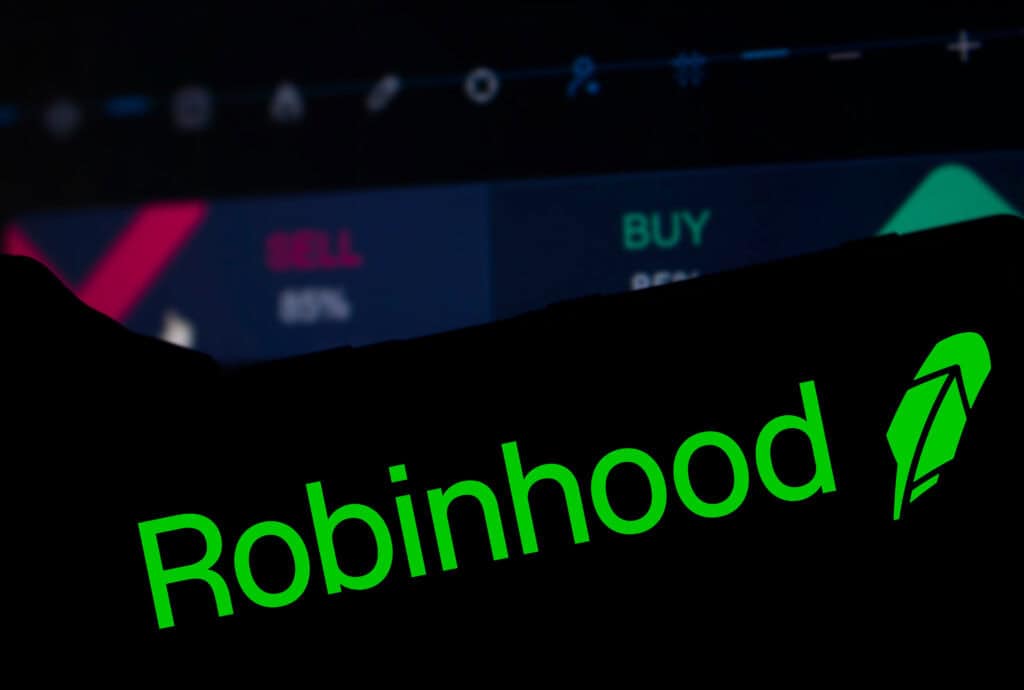Futures Push Higher Into Record Territory Amid Trade Talk Progress
S&P 500 futures pushed deeper into record territory as progress in trade negotiations aids sentiment following Friday’s record high close for cash index, the first since February. As of 8:00am ET, S&P futures are up 0.4% on positive trade headlines, including US/Canada, US/EU, US/India, and US/Taiwan (on Friday, the US/Canada flare up limited gains late in the session, with Canada reversing just two days later and agreeing to withdrew its digital services tax on US tech companies to restart talks). Nasdaq futures gain 0.6% amid a continued meltup in AI names and the most shorted basket; tech stocks lead in premarket trading, with Mag7/semis producing early strength, banks higher on de-reg, with Industrials also pushing Cyclicals over Defensives. Major European markets are all lower with France leading and Spain lagging, while the Asian session saw Japan leading and HK lagging given weakness in HSTECH. Besides the Canadian U-turn, French Finance Minister Lombard said hes optimistic about securing a EU/US trade deal before the July 9th deadline; India’s trade team extended their stay in the US to work on a deal. Outside of trade, focus for the week will be on quarter-end today, Powell speaking and ISM Manf on Tuesday and Payrolls on Thursday, along with negotiations over Trump’s “One Big Beautiful Bill.” Yields are lower with the very front-end selling off while 10Y yields are down 2bps to 4.25%. Month-end bond index rebalancing at 4pm New York time has potential to drive buying by passive investors. The USD starts the week lower. Commodities are mixed with Energy weaker, precious higher, and Ags mixed. Today’s macro data focus is Chicago PMIs (9:45am), Dallas Fed Manf (10:30am), Fed’s Bostic (10am), Goolsbee (1pm); markets await jobs data over the next 3 sessions.
In premarket trading, Tesla is the only stock among Magnificent 7 companies falling, down 0.8%, as President Trump’s landmark budget bill passed a key senate hurdle over the weekend. The bill cuts electric vehicle and other clean energy credits. Other Mag7 names are all higher (Amazon +0.6%, Meta +1.9%, Apple +0.8%, Nvidia +0.7%, Alphabet +1.2%, Microsoft +0.6%).
The de-escalation in the conflict between Israel and Iran, combined with data highlighting the US economy’s resilience, propelled the S&P 500 to a record high last week, marking a stunning rebound from April’s tariff-induced rout. Subdued inflation is also strengthening market expectations for interest-rate cuts, even as the Federal Reserve maintains a cautious stance.
Sure enough, US futures continue to climb on positive trade developments ahead of the July 9th deadline; Canada withdrew digital service tax on tech firms to restart talks w/ US, France’s finance minister said EU can reach some form of agreement before July 9th deadline, India’s team extended their stay in the US to work on a deal, Taiwan noted constructive progress, although Japan talks reportedly stalled over auto tariffs. With Trump’s July 9 trade deadline fast approaching, officials say negotiations with major partners such as China and the European Union are making progress. Talks with Canada are back on track after the country withdrew a digital services tax, while India’s trade team extended their stay in Washington to iron out differences.
“There is room for further investments in stocks. However, let us not forget that the tariffs will bring a stagflation risk on the US economy,” said Fabien Benchetrit, head of target allocation for France and southern Europe at BNP Paribas Asset Management.
Elsewhere, Trump’s One Big Beautiful Bill Act starts a Senate debate/vote this morning with the goal still for a passage by July 4th, after passing a key procedural block by a narrow margin over the weekend. Negotiations are continuing as Republicans seek to convince holdouts to support it for final passage. The nonpartisan Congressional Budget Office estimates the measure would add nearly $3.3 trillion to US deficits over a decade, weighing on the greenback.
Momentum trades persisted not only in stonks, but also in FX, and the dollar resumed its decline, falling as much as 0.4% against a basket of currencies to trade near three-year lows. The Bloomberg dollar index is down almost 9% for the year, its worst first half since the gauge’s inception in 2005.
“The US dollar remains under cyclical downward pressure, driven by ongoing uncertainties surrounding US fiscal and trade policies,” noted Lloyd Chan, a strategist at Mitsubishi UFJ Financial Group. “One key driver that could further hurt the US dollar is the potential surge in fiscal debt stemming from President Trump’s one big beautiful bill.”
In Asia, the Taiwan dollar plunged more than 2% against the greenback. The sudden move in late trading followed a pattern seen on Friday, fueling speculation the central bank intervened to curb strength in the currency.
Investors are looking to upcoming data, including the monthly payrolls report, to assess the strength of the economy and the outlook for interest rates, with swap traders pricing in at least two quarter-points of Fed easing this year. The employment data “will be watched closely for any signs that the US economy is reaccelerating or slowing more than anticipated,” said Daniel Murray, chief executive officer of EFG Asset Management. “If the latter, then the Fed would be expected to cut rates earlier, although it would be more concerning from the corporate side of things.”
European stocks erase early gains as the Stoxx 600 declines 0.2% with auto, bank and mining shares leading the broader market lower. Here are the most notable movers:
Earlier in the session, Asian stocks edged lower, reversing early gains, as losses widened in Hong Kong and Taiwan in late trading. Tech shares weighed on the regional benchmark after making advances last week. The MSCI Asia Pacific Index erased an increase of as much as 0.4% to trade 0.2% lower, with TSMC, Tencent and Alibaba the biggest drags. Gauges in India and the Philippines also fall, while those in Japan, South Korea and Australia closed higher. Tech firms listed in Hong Kong mostly traded lower as investors took some money off the table ahead of a deadline for trade talks with the US next week. Shares fell more than 1% in Taiwan amid equity outflows and as the local currency slumped in a sudden move toward the end of trading.
In rates, treasury futures advance in early US session, outperforming European bonds gaining on UK GDP and regional German CPI data. Yields are 2bp-3bp richer across tenors with curve spreads little changed; Month-end bond index rebalancing is projected to increase duration of Bloomberg Treasury index by 0.07 year. Bunds gain, having benefited from state inflation readings that point to the national rate coming in slightly below the consensus later on Monday. Italian CPI also rose less than expected. German 10-year borrowing costs fall 1 bp to 2.58%.
In FX, the Bloomberg Dollar Spot Index falls 0.2% while the yen take top spot among the G-10 currencies, rising 0.3% against the greenback. The pound is the weakest with a 0.1% fall.
In commodities, oil slightly lower following headlines of a potential sizeable OPEC+ production increase on Friday, with the meeting set for this weekend. CTA models are now firmly for sale in oil—nearly $10bn in selling expected over the week across Brent and WTI. WTI trades down 0.3% to around $65 a barrel. Energy remains a funding short. Spot gold climbs $10 to around $3,285/oz.
Looking at today's calendar, the US data slate includes June MNI Chicago PMI (9:45am, several minutes earlier for subscribers) and Dallas Fed manufacturing activity (10:30am). Ahead this week are ISM manufacturing, JOLTS, ADP employment and June employment report — on Thursday ahead of July 4 holiday. Fed speakers include Bostic (10am) and Goolsbee (1pm). Tuesday, Fed Chair Powell participates on a policy panel in Sintra with BOE Governor Andrew Bailey, ECB President Christine Lagarde, BOJ Governor Kazuo Ueda and Bank of Korea Governor Chang Yong Rhee.
A more detailed look at global markets courtesy of Newsquawk
ASX 200 edged higher with strength in the defensive sectors but with upside limited by data including softer-than- expected private sector credit. Nikkei 225 outperformed despite disappointing Industrial Production data which showed a surprise Y/Y contraction and with the index also unfazed by recent comments from US President Trump who noted that Japanese vehicles should be subject to a 25% auto tariff in the US. Hang Seng and Shanghai Comp were mixed following the latest PMI data which showed headline Manufacturing PMI remained in contraction territory, as expected, although Non-Manufacturing PMI accelerated at a faster pace than forecast.
Top Asian News
However, gains are modest and benchmarks are gradually dipping into the red with traders cognisant of the looming July 9th reciprocal deadline. Sectors opened firmer with just Energy in the red, though the picture since has become more mixed but with the breadth of price action narrow. Focus on reports that US tariff policies coupled with low river levels are causing the worst supply chain congestion since COVID, according to FT. Issues at the ports of Rotterdam, Antwerp, and Hamburg are expected to last for several months.
Top European News
- Iran’s Armed Forces Chief of Staff Mousavi told Saudi Arabia’s Defence Minister that they highly doubt Israel’s commitment to the ceasefire, according to Tasnim.
- Iran permitted the transiting of international flights over the centre and west of the country. In relevant news, Emirates cancelled all flights to and from Tehran until July 5th due to the regional situation, while it is to recommence operations to Baghdad on July 1st and Basra on July 2nd.
- US President Trump says he is not offering Iran anything, and is not talking to Iran since destroying their nuclear sites.
- "A source involved in the negotiations for a ceasefire in Gaza told the pro-Qatari news website Arabi 21 this morning that it is believed that an Israeli delegation will arrive in Cairo in the next two days", according to Israeli Radio's Kai.
- Iran's MFA spokesperson Baghaei says Iran and the EU have not agreed on a date for the next round of discussions. Talks are ongoing with the E3.
- Russia said its troops captured Novoukrainka in eastern Ukraine, according to RIA.
- US President Trump said on Friday that he may send patriot missiles to Ukraine and commented that he will get the conflict solved with North Korea’s leader Kim.
Geopolitics: Other
- India’s Ministry of External Affairs said they have seen and rejected the official statement by the Pakistan Army seeking to blame India for the attack in Waziristan on June 28th.
US Event Calendar
- 9:45 am: Jun MNI Chicago PMI, est. 42.85, prior 40.5
- 10:30 am: Jun Dallas Fed Manf. Activity, est. -12, prior -15.3
Central Banks speakers
- 10:00 am: Fed’s Bostic Speaks on the Economic Outlook
- 1:00 pm: Fed’s Goolsbee Speaks in a Moderated Discussion
DB's Jim Reid concludes the overnight wrap
Good morning and welcome to the last day of a tumultuous H1. I think I got heatstroke three times over the weekend so I'm looking forward to work and air con today. Good luck in parts of France, Spain, Italy, Portugal and Greece (amongst others) as you continue to battle temperatures over 40 degrees.
If the heat doesn't impact you, standby to be disorientated in other ways in this holiday shortened week, as payrolls sees a rare Thursday outing ahead of the Independence Day holiday on Friday. We also have the US ISMs tomorrow and Wednesday, and the various global PMI numbers from tomorrow which will give us a good guide to global economic momentum in June. Elsewhere a highlight will be the ECB forum in Sintra starting today and the European inflation numbers today and tomorrow. The US tax bill should be finalised this week although at the moment it needs to pass the Senate today (or possibly tomorrow), after a drama filled weekend of horse trading, and then back to the House for final approval. The President wants it done by Friday's holiday. At that point attention will swiftly focus to the July 9th deadline extension for reciprocal tariffs. Indeed you'll probably get headlines build up this week and the risk to the market is that with the S&P 500 hitting a new record high at the end of last week, with Treasury yields more becalmed, and with a new tax cutting bill, it's possible that the Trump Administration feels emboldened to be aggressive again. On Friday the US announced that they were stopping trade talks with Canada in retaliation for their digital service taxes and that new tariffs would be launched within a week. However, overnight Canada has dropped this tax to enable talks to restart. This is perhaps a warning shot for the world. So before next Wednesday a lot of water will flow under the global trade bridge.
As noted at the top there is still a fair amount to get through this week first and we'll now go through a few of the main highlights of the week ahead, but remember the full day-by-day calendar is at the end as usual.
For payrolls, DB expects the headline number (+100k forecast vs. +139k previously) to be slightly below the consensus of +113k, with a similar story for private payrolls (DB +100k, consensus +110k, vs. +140k previously). This would also be below the three-month average of 135k and 133k, respectively. Their rationale is based on 1) initial jobless claims being up 8.8% during the June survey week relative to May; and 2) their observation of a recent pattern of subdued summer payroll gains. They also expect the unemployment rate to edge up a tenth to 4.3% but with the risks skewed to it staying unchanged.
Although 100k on payrolls seems low, our economists think the breakeven rate which keeps the unemployment rate steady, is around 100k at the moment and could even be as low as 50k given the Trump Administrations' migration policies. If correct we could have a situation where low payroll growth still tightens the labour market. See US Economic Perspectives: Potential paths for breakeven employment for more on this.
Leading up to payrolls we have JOLTS tomorrow, ADP on Wednesday and also watch out for the employment components in today’s Chicago PMI, tomorrow’s manufacturing ISM, and Wednesday’s Services ISM.
In Europe, the big event will be the ECB's forum on central banking in Sintra running from today through to Wednesday. The policy panel tomorrow will feature heads of the Fed, the ECB, the BoJ, the BoE and the BoK. So plenty of potential headlines there. The ECB will also release its account of the June policy meeting on Thursday and their consumer expectations survey is due tomorrow. Elsewhere in Europe, the BoE will publish its DMP, bank liabilities and credit conditions surveys on Thursday.
In terms of European data, June CPI will continue to be in focus after Friday's prints for France and Spain showed a slight uptick in inflation. Reports for Germany and Italy are out today, with the Eurozone-wide release scheduled for tomorrow. Swiss inflation data is due on Thursday. We also have May German retail sales (today) and factory orders (Friday), Italian retail sales and French IP on Friday.
In Japan the BoJ's Q2 Tankan survey results come out tomorrow with our economists forecasting that the business condition index for large manufacturers in the Tankan survey will worsen -3 points to +9. They expect a similar gauge for large non-manufacturers to slip -2 points to +33. This could be one of a few factors that help influence whether the BoJ hikes again in July, although there's lots of moving parts at the moment including trade agreements with the US.
Asian equity markets are predominantly trading higher this morning. The Nikkei (+1.64%) is standing out, with the index surging to near a one-year peak, propelled by technology stocks. The KOSPI (+0.69%) and the S&P/ASX 200 (+0.52%) are also higher. Chinese stocks are more mixed with the Hang Seng (-0.56%) trading lower, the CSI (-0.02%) flat, but the Shanghai Composite (+0.20%) edging up. S&P 500 (+0.41%) and NASDAQ 100 (+0.57%) futures are both pretty firm for this time of day.
Early morning data indicated that China's manufacturing sector contracted for the third consecutive month in June, although at a slightly slower pace than anticipated. The official manufacturing PMI rose to 49.7 in June (49.6 expected) from the previous month's 49.5. However, the non-manufacturing PMI accelerated a touch, increasing to 50.5 in June, exceeding expectations that it would remain stable at 50.3. Consequently, China's Composite PMI improved to 50.7 in June from 50.4 in May.
In other news, Japan's industrial output fell significantly short of expectations, with a mere +0.5% month-on-month increase compared to the expected +3.4% growth. Although production saw improvements in critical sectors such as machinery and automobiles, five categories—led by non-auto transport equipment—experienced declines.
Recapping last week now and markets were in a buoyant mood, with the S&P 500 rising +3.44% to a new all-time high of 6,173 (+0.52% on Friday) as we closed out the week. Tech stocks outperformed, with the NASDAQ (+4.25%, +0.52% Friday) advancing every day last week to a new high of its own. In Europe, the STOXX 600 (+1.32%) posted a modest weekly gain, with the DAX (+2.90%) outperforming, led by German defense companies. And in Japan, the Nikkei had its best week of 2025 so far, up +4.55% (+1.43% on Friday).
The positive mood started with the de-escalation in the Middle East after Trump announced Monday evening that Israel and Iran agreed on a “Complete and Total CEASEFIRE.” Following this, Brent crude saw its biggest weekly decline since 2022, down -12.00% to $67.77/bbl (+0.06% Friday). Meanwhile, gold fell -2.79% on the back of declining geopolitical risk (-1.61% Friday).
Last week’s upbeat tone was also helped by rising expectations of Fed rate cuts despite decent economic data. The positive data included the flash US PMIs for June (52.8 vs. 52.2 expected) and Friday’s UoM consumer survey, that saw current conditions rebound to a four-month high. On the softer side, we saw higher continuing jobless claims (+1,974k vs +1,950k expected) on Thursday and an unexpected drop in May real personal spending (-0.3% vs. 0.0% expected) on Friday.
Lower oil prices and comments from Michelle Bowman, the Fed’s Vice Chair for Supervision, saw pricing of a July rate cut rise as high as 25% on Wednesday, though it was down to 19% by Friday following a slightly stronger (2.7% vs. 2.6% expected) US core PCE inflation print. Still, the next Fed rate cut is now fully priced by September and 64bps of easing is priced by December (+12.7bps on the week). In turn, Treasury yields moved lower, with the 2yr down -16.0bps (+2.9bps Friday) to 3.75%, its lowest since early April, while the 10yr yield was down -9.9bps to 4.28% (+3.6bps Friday). Treasuries were also supported by the Fed announcing a planned easing of banks’ Supplementary Leverage Ratio.
By contrast In Europe, 10yr bund yields rose +7.4bps to 2.59% (+2.2bps Friday) as the German government unveiled a faster-than-expected ramp up of its fiscal stimulus. However, OATs (+1.7bps) and BTPs (-2.4bps) saw smaller moves, with the 10yr BTP-bund spread falling to its lowest level since 2015 at 88bps. The contrasting rates moves on the two sides of the Atlantic saw EURUSD rise +1.69% on the week to 1.1718, its highest level since September 2021.










